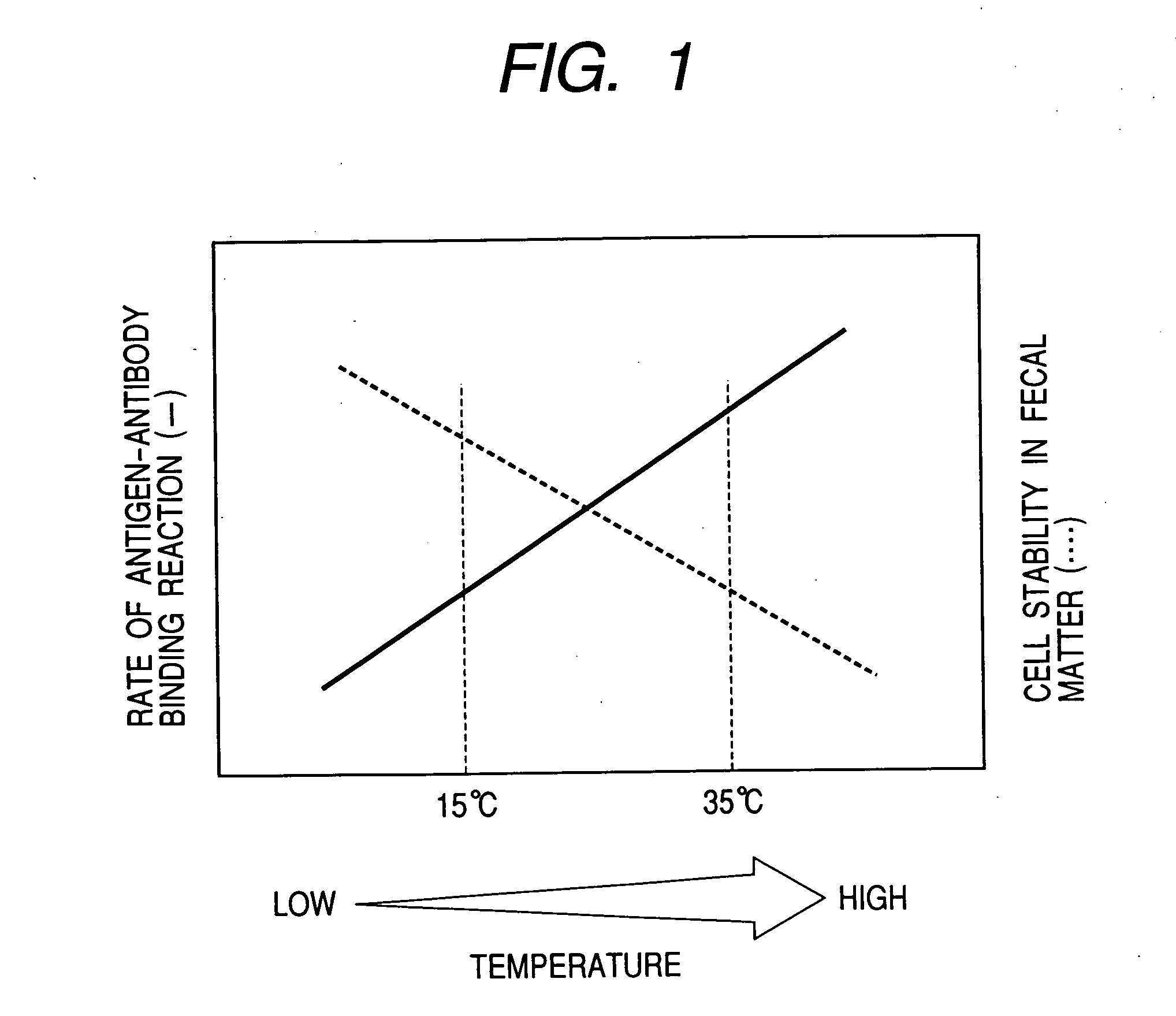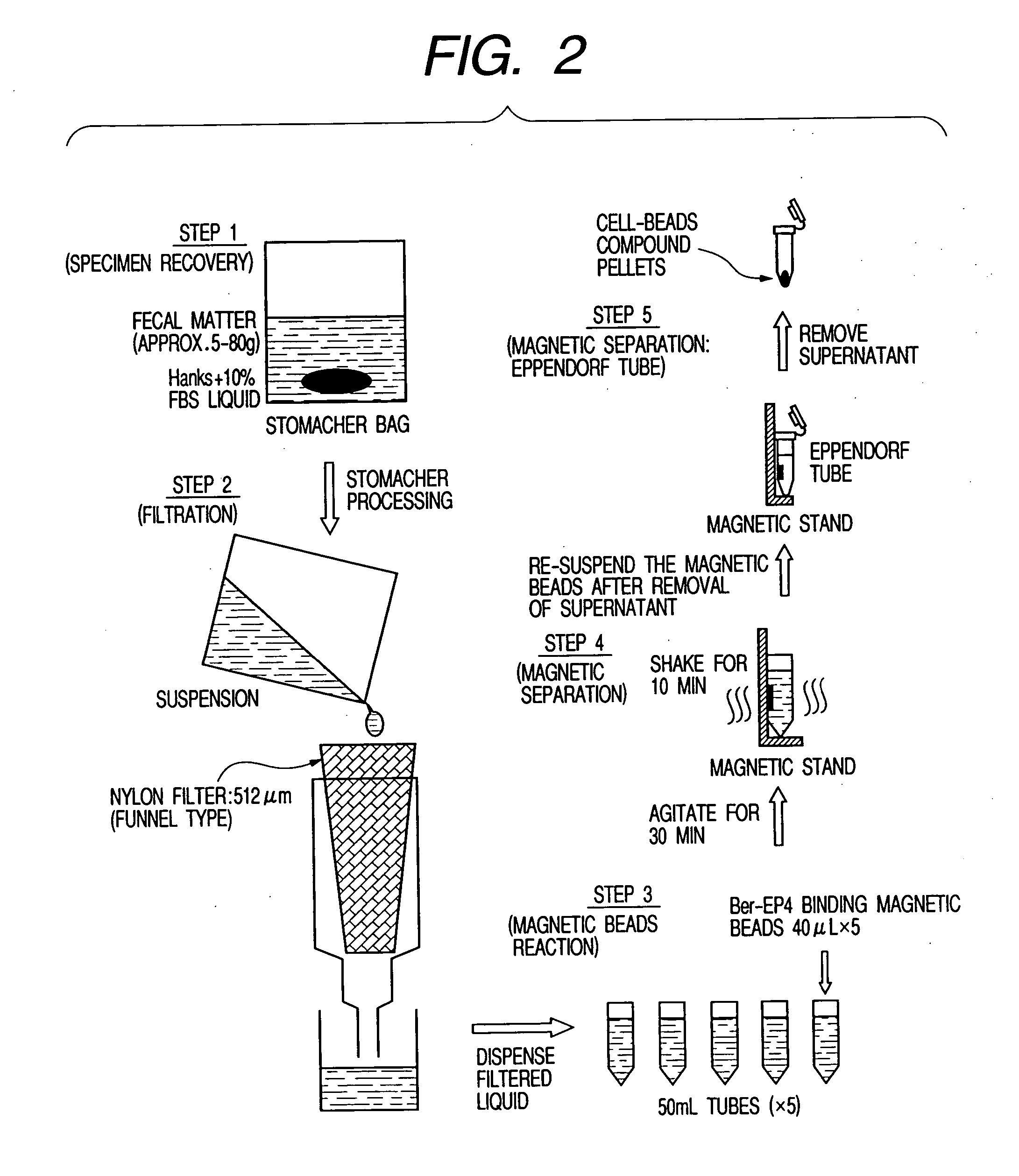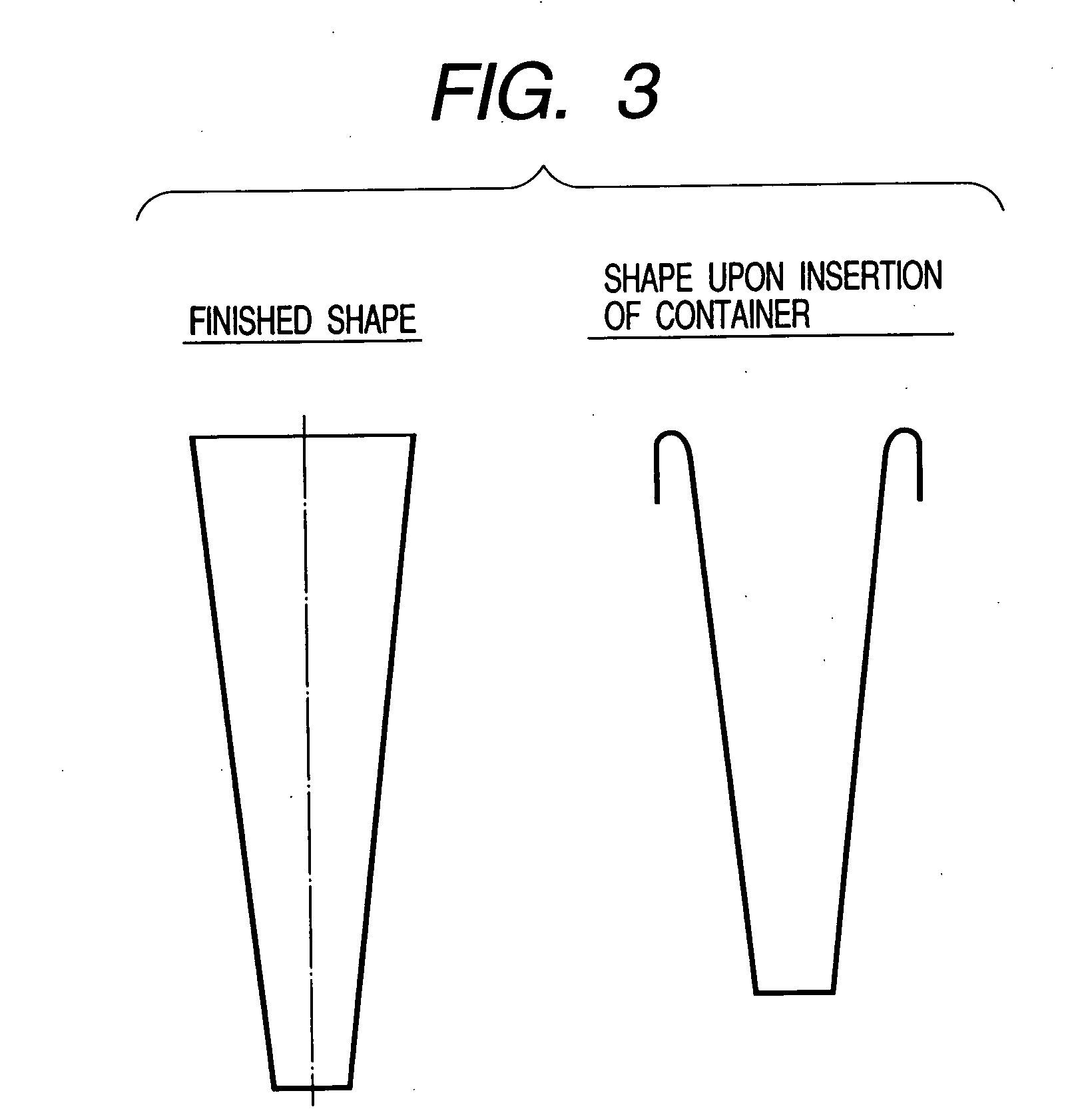[0019] For the determination of colorectal cancer using the cells recovered from stool, a method employing a cytological analysis for identifying colorectal cancer is very effective. However, in the conventional cooling method, the cells are damaged by the cooling operation, thereby making it difficult to perform a cytological analysis.
[0022] Specifically, in contrast to the cooling method in which the surface of a cooled and frozen stool is scraped and then cancer cells existing in the surface of the stool are exfoliated, the method of recovering cells according to the invention includes the steps of, at
room temperature, preparing a sample to which a
buffer solution is added, causing a
cancer cell in the sample from which the
impurity has been removed to be adsorbed on a
solid carrier, and recovering the thus adsorbed
cancer cell. Thus, all of the steps for the
recovery of cancer cells can be conducted without
temperature control. Similarly, the apparatus for recovering cells according to the invention includes a bag for storing a sample comprising a
buffer solution and stool at
room temperature, and a container in which a
solid carrier for the adsorption of a
cell in the sample is stored. Thus, the
cell recovery apparatus does not require a
temperature control means. As a result, the
cell recovering method and apparatus according to the invention can simplify the cell
recovery operation and allow cancer cells in stool to be recovered stably and efficiently, thereby providing a high determination accuracy.
[0024] Further, the invention provides a novel
filter system capable of handling a suspension of stool as a whole. A funnel-shaped filter improves the efficiency of filtering of a stool suspension, reduces the time required for operation, and eliminates the operation of
centrifugation, thereby greatly simplifying the entire operation. Further, as cells are recovered from the stool as a whole including the central portion thereof, cancer diagnosis can be conducted on the entire
large intestine. On the other hand, a multi-stage filtering apparatus allows the cells to be trapped on a film and thus condensed. The film in which the cells are trapped can then be recovered, so that the invention can be adapted for an automated
system.
[0026] In accordance with the method and apparatus of the invention for cell recovery, good, living cancer cells can be recovered from stool at
room temperature, in contrast to the cooling method as disclosed in JP Patent Publication (Kohyo) No. 11-511982 A (1999) (WO97 / 09600), whereby the surface of a cooled and frozen stool is scraped and then cancer cells existing in the surface of the stool are exfoliated. Thus, in accordance with the invention, the recovered cells can be subjected to cytological, immunological and biochemical analyses with high accuracy. Also, the method and apparatus of the invention for recovering cells can utilize a cell deriving from early colorectal cancer or the stool as a whole as a specimen, cancer cells deriving from the ascending colon, which are difficult to detect endoscopically, can be recovered. Thus, the invention can provide a highly reliable
examination method. Further, the method and apparatus of the invention have eliminated the
centrifugation and cooling operations so that the operation can be simplified and performed in less time. Thus, an automated total
system for colorectal cancer examination can be constructed using the method and apparatus of the invention.
 Login to View More
Login to View More  Login to View More
Login to View More 


